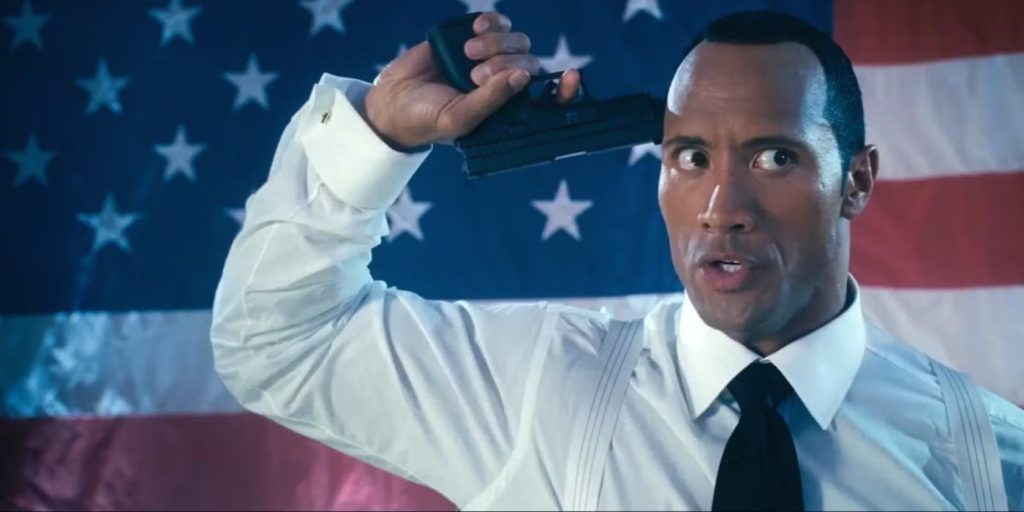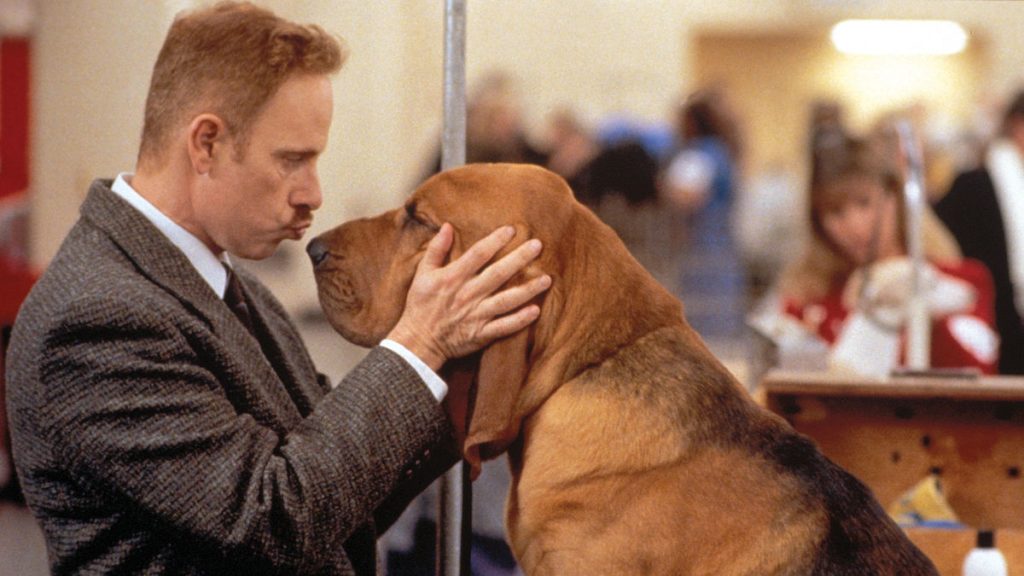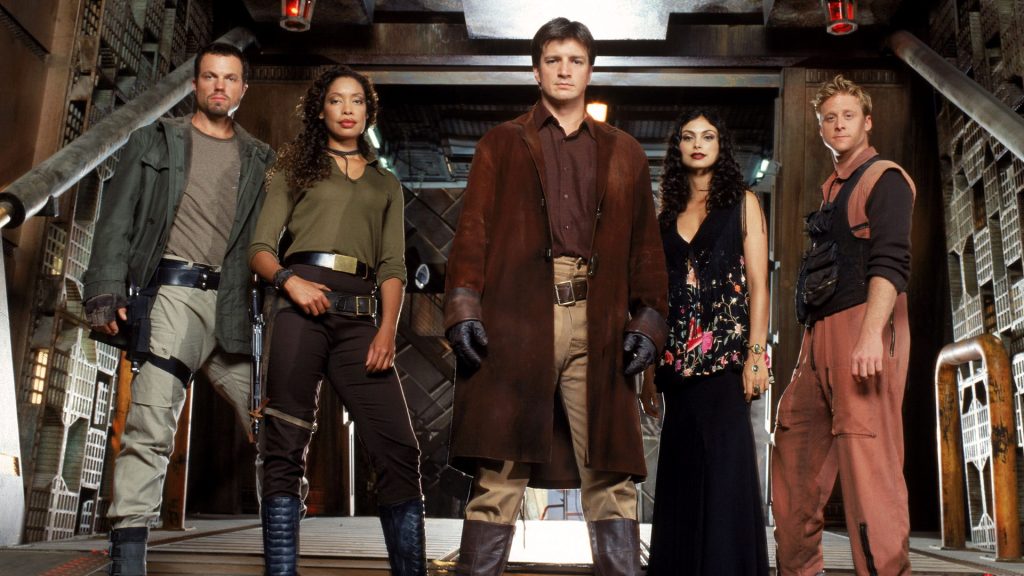In The Sugarland Express, if the camera isn’t moving, it’s probably bolted to something that is – Panavision granted the production first crack at the unprecedentedly portable Panaflex camera specifically to see what it could do on the road. But the most moving shot doesn’t move at all.
Halfway through a 36-hour odyssey to reclaim their infant son from his foster parents, fugitive couple Clovis and Lou Jean Poplin hunker down for the night in a car dealership overlooking a drive-in. Despite an ever-growing entourage of police cars, the pair take silly solace in a Wile E. Coyote cartoon. Media darling Clovis fills in as a one-man soundtrack until Lou Jean falls asleep, leaving him alone to silently watch what’s left. Explosion. Electrocution. Annihilation. A little cloud at the bottom of a cliff marking the remains of a criminal mastermind only half as smart as he thinks he is. Clovis’s mouth hangs open, but he’s not meeping anymore. Forty-eight years before self-diagnosing with The Fabelmans, Spielberg demonstrated the power of cinema to simultaneously spark our dreams and spell our doom in a single shot.
And he did it in a film that takes up even less time than his TV work in HBO’s almost-definitive 147-minute documentary, Spielberg. To the subject, no stranger to mythmaking, its legacy isn’t worth more than a cool line in Pauline Kael’s otherwise glowing review, wondering if Sugarland was ultimately shallow. “She was absolutely right,” he admits now, with the security of the highest-grossing director in film history still $4 billion in the lead.
Back in 1973, on a caravan set winding through South Texas, he talked a bigger game. The 26-year-old told American Cinematographer he wasn’t interested in all his old TV trick shots anymore: “I did a lot of that early on and got it out of my system.” This was after he’d already dreamed up a oner that would pan 360-degrees from the backseat of a car. According to bemused cinematographer Vilmos Zsigmond, it ended up closer to 480.
If there is a fault line in The Sugarland Express, it runs narrowly between the filmmaker he was becoming and the filmmaker he self-consciously longed to be. This is his only work that fits comfortably within the confines of New Hollywood, released the same year his pals were putting out Alice Doesn’t Live Here Anymore, The Conversation, and Phantom of the Paradise.

Adapting a true story right out of the gate – 10 more movies before they became a distinct subgenre of Spielberg – might sound like an impatient shortcut to legitimacy, but co-writers Hal Barwood and Matthew Robbins printed something thornier than legend. By the account of the state trooper they took hostage, ex-con husband Bobby Dent did more of the thinking than wife Ila Fae. The first scene between the fictionalized Clovis and Lou Jean muddies those waters with a smile.
When Goldie Hawn, fresh out of the joint, visits William Atherton, still in one, she speeds through the bad news – state took their son and she’s leaving him if he can’t help the boy back. It’s the truth, but it’s unconvincing. At the time, it might’ve been tempting to assume the movie had crashed headlong into the dramatic limitations of TV’s favorite ditz. But once Atherton believes her, she beams so radiantly, so honestly that it’s never again in question which Poplin is in control. When she reveals a secret set of breakout clothes beneath her own a few minutes later, it isn’t even a surprise.
Spielberg himself called The Sugarland Express “a one-note, simple beautiful tale” at the time, but 50 years removed, that sounds like humble insecurity. The plot is no bigger than the interior of a 1973 Dodge Polara, but the drama sneaks in at the anamorphic edges, where the patrol cars stretch to the visible end of the Earth and the snipers lie in wait. Clovis deciding too late that he’d like to settle down after all this “farting around.” Lou Jean yelling at pursuing reporters to ask her some questions for a change. The foster father requesting that the cops put daddy down with his favorite hunting rifle. When the scopes finally come out, the only difference between the police sharpshooters and a good ol’ boy posse is last-honest-lawman Ben Johnson declining the formers’ 90% promise they won’t hit any civilians.
“I believe Spielberg can also make very important little dramas, very serious pictures about love, relationships and so forth, and maybe at some point in his career he’ll want to,” said Roger Ebert in a special Spielberg-centric episode of Siskel & Ebert, just a decade past Sugarland. “But at this point, he’s going for the home run every time.”
Right before his home run derby changed the scale of cinema forever, Steven Spielberg did make an important little drama, smaller than the true stories he’d work his way back to but just big enough for the vehicular mayhem to jilt admirers. Though it echoes everything from Jaws – a few local non-actors run away with their scenes – to The Fabelmans, calling The Sugarland Express a Rosetta Stone oversells it. But for a film that begs closer inspection than even Spielberg himself seems comfortable with, the best case for its quiet poetry and against its non-reputation is another unmoving shot, this one much simpler: baby boots, never worn.
“The Sugarland Express” is available for digital rental or purchase.



